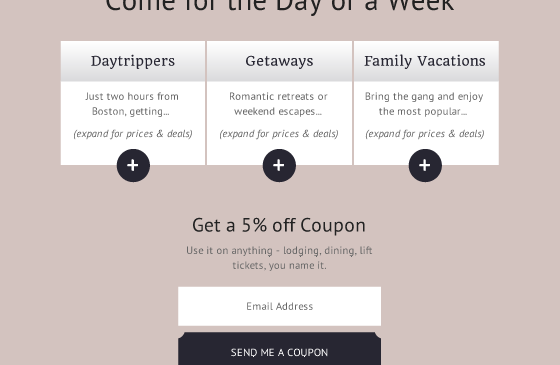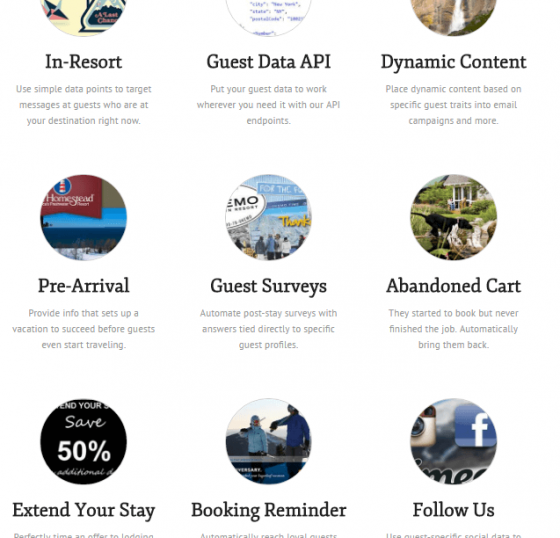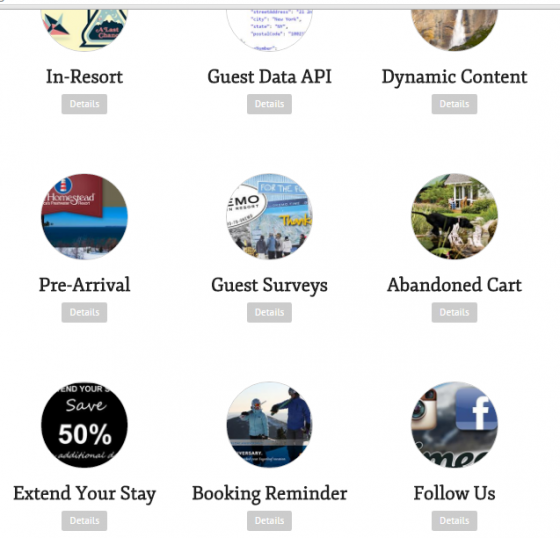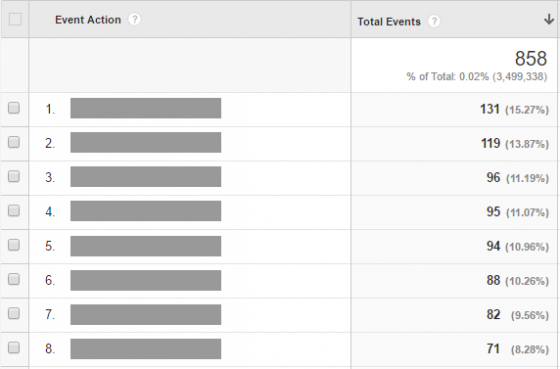Websites
A story about how I stopped guessing in my marketing and made website visitors talk to me.


BLANCHARD
Do you ever wonder which of all those positive attributes you describe your resort with actually mean anything to skiers?
You know, the claims of “longest runs” or “highest vertical” or “most family friendly.” Or whether “1000′ zip lines” or “scenic mountain coasters” or “award-winning golf courses” is the most popular summer attraction purely from an interest point of view?
I wondered the same. Here’s how I got an answer.
Lots o’ Features
Like a ski resort’s list of products or superlatives, I found myself with a similarly long list when I was testing a new area on the Ryan Solutions home page that talked about some of the campaigns and options within lifecycle messaging and data-driven marketing.
Over and over I asked myself,
“Which of this list of 15-20 things do potential clients even care about?”
I had a list of 9 guesses that were live on the site. In many ways, this looks very similar in both execution and concept to the way many resorts break up some of their key products and features.
Before I show you what I did next, let me back up and talk about a concept I shared here on SlopeFillers over two years ago when I tried to design the “simplest resort website ever.”
Among a few ideas I implemented was this table toward the bottom:

That expand link appears to simply save space, but here’s what I said about the reason I designed that specific functionality into the concept:
“The whole goal of the table is to get people to indicate a behavior type. The hidden text and plus signs are there to lure people into clicking. When they click, that tells me something about what type of visitor they’d be (local, destination, destination-family). With that information, I’d then stick them into a individual segments with dedicated follow-up messaging for each.”
So here’s what I did.
First, I loaded up all 15+ of these features into an array and showed a random group of 9 (in a random order) every time the page loaded.
Second, I hid the description text and added a button to reveal that. As you can imagine, that button triggered an event in Google Analytics with the name of the feature.
A month or so later I could jump into Google Analytics, run an event report, and see this.
Yes, I’ve hidden the names of those features, and you if you ever write a public post about it you should to. You’ve just learned something really valuable about your guests and, on the aggregate, how they view the different facets and highlights of your products.
But with that knowledge I could confidently put the most intriguing features first and know how many to show.
Again, all because I designed that part of my site to not just convey information or look nice, but to actually answer a very specific question through the way people interacted with it.
About Gregg & SlopeFillers
I've had more first-time visitors lately, so adding a quick "about" section. I started SlopeFillers in 2010
with the simple goal of sharing great resort marketing strategies. Today I run marketing for resort ecommerce and CRM provider
Inntopia,
my home mountain is the lovely Nordic Valley,
and my favorite marketing campaign remains the Ski Utah TV show that sold me on skiing as a kid in the 90s.
Get the weekly digest.
New stories, ideas, and jobs delivered to your inbox every Friday morning.



